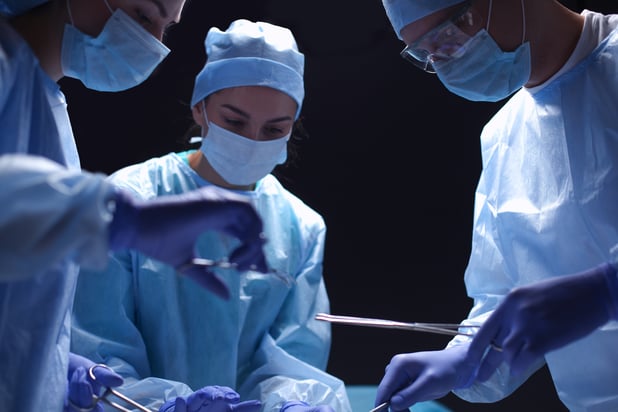Share this
Dental Implants Singapore- dealing with the complications
on December 15, 2015
 Yesterday, I saw two patients with complications of their dental implants done elsewhere. One has fifteen implants in the mouth and is having infection with some of them while another has had a sinus bone graft and twelve implants and was having discharge coming out of his nose. Situations like these are becoming more and more common.
Yesterday, I saw two patients with complications of their dental implants done elsewhere. One has fifteen implants in the mouth and is having infection with some of them while another has had a sinus bone graft and twelve implants and was having discharge coming out of his nose. Situations like these are becoming more and more common.
When I first started doing dental implants twenty years ago, there were only a handful of clinics providing that service in Singapore. There was only one major dental implant brand with a representative in Singapore. They were very strict with who they sell their implants to. Before a dentist can buy their implants and equipment, he must pay thousands of dollars to attend their course. Within those clinics, the number of dental implant patients was also limited as the idea of surgery turned people off. Furthermore, the range of implants and components available was rather narrow and that limited the use of implants for many patients who would like to have implants. Today, the scene is completely different and with the increase in numbers, the incidence of complications has also risen significantly.
Over the last twenty years, advances in implant dentistry has rendered many cases which were previously unsuitable treatable. Greater public awareness through various publicity channels, especially the internet, has also educated patients on the benefits. Today, a dental implant is the treatment of choice for teeth replacement. More than 50% of registered dental clinics in Singapore are equipped to provide that service.
A better understanding of the process of implant healing has also led to more innovative procedures to augment the deficient jaw bone to receive dental implants. Along with rising complexities of treatment plans, complications are also on the rise. Let’s get back to the two patients I mentioned earlier.
First, the patient with 15 implants in his lower jaw. They were mini implants to be exact. Mini implants are implants with a diameter of less than 3mm. Due to their narrowness, they are being marketed by some clinics as less “invasive” or even “non-invasive” and hence less painful. They are also marketed as cheaper than conventional implants. However, to make up for the narrowness, more implants were placed and in this particular case, fifteen.
The problem that the patient presented with was food trapping and infection of some of the implants. This is a difficult problem to solve. The infected implants need to be removed. But the prosthesis has to be removed first. The prosthesis has been cemented to the implants and cannot be removed without drilling it out. Drilling out the bridge will be a difficult procedure due to the sheer number of implants that it is cemented to. Even after drilling out the prosthesis and removal of the failed implants, the remaining implants may not be in a strategic position to enable fabrication of a new prosthesis on it. If that is the case, the remaining implants will have to be drilled out.
For this patient, there are three options.
- One is to have all the implants removed and redo a new screw-retained prosthesis supported by four conventional implants. Screw-retained prosthesis can be removed in the clinic for adjustments without having to drill it up, unlike the cemented prosthesis that mini implants support. Having fewer implants also makes maintenance easier as there are only four posts to floss as compared with fifteen.
- Alternatively, an implant-retained removable denture can be made. This will require placement of two conventional implants for the denture to clip on to. While not as solid as a fixed implant-supported prosthesis, this clip-on denture do work pretty well for many patients.
- On the other hand, if some of the surviving mini implants are salvageable, they can be used as the retentive elements for a clip on denture.
This patient has had a history of complications. He did not have sufficient bone in the back of the upper jaw. As such, he underwent a procedure known as a sinus bone graft, whereby the sinus lining is lifted up and a commercially sourced cow bone graft was placed under the lining. This is to allow his own bone to grow in and then implants were placed in this newly formed bone. The first surgeon did the surgery five years ago but the implants failed a year later and were removed. He went to another surgeon and repeated the surgery earlier this year. However, he soon developed a discharge coming through his nose and bad breath ensued. He saw an Ear Nose Throat surgeon who said that the implants and bone graft is causing the sinus to be infected and sent him back to his oral surgeon. The patient told me that the oral surgeon “cleaned up” the infection but it recurred within two weeks.
The implants are firm but there is a deep pocket along one of the implants. X-rays showed that whole of the right sinus to be filled with fluid and the bone graft also showed signs of infection.
Dealing with other surgeon’s complications us always tricky. In this case, this is already the second time the sinus bone graft and implants failed. With each failure, the chances of successfully re-doing it drop due to scarring of the tissue and reduced blood supply. One option is to remove the prosthesis, which fortunately is a screw-retained one, check the implants individually and remove the loose one/s if any. If one or more implants are loose, infected bone graft should be removed as well. The sinus should be left to heel for a month or so. A new CT scan should be taken to confirm resolution of sinus infection before re-doing the bone graft and implants. For this third attempt at bone grafting the sinus, autogenous bone from the hip will give a much higher chance of success. It entails an additional surgical site but that is better than having another infection.
As dental implant treatment becomes ubiquitous, there will be an increase in the number of complications. Sometimes, the first dentist who did the implant may not have the competency to manage the complication and need to refer. Others may be able to deal with it but the patient may choose to go elsewhere due to a confidence issue. Either way, the incidence of complications is on the rise. Even in the best of hands, complications do happen. We strive hard to minimize the complications but it is not possible to prevent it altogether. Fortunately, there are many techniques available to reconstruct tissue lost in the process. It may involve a longer route but most complications can be resolved.
Share this
- Jaw Surgery (93)
- Dental Implants Singapore (90)
- Orthognathic Surgery (48)
- Replacing Missing Teeth (26)
- Missing Teeth Options (23)
- Underbite (23)
- Bone Grafting (21)
- Costs (18)
- Facial Aesthetics (18)
- Aesthetics (17)
- dental implants (16)
- corrective jaw surgery (15)
- BOTOX (11)
- Dermal Fillers (11)
- Wisdom teeth (10)
- Fixed Implant Dentures (8)
- Loose Dentures Singapore (6)
- Medisave (6)
- sleep apnea (6)
- Braces (5)
- Dental Pain (5)
- Dentures in Singapore (5)
- Loose Teeth (5)
- Tooth Extraction (5)
- jaw deformities (5)
- bimax (4)
- bone graft (4)
- maxillomandibular advancement (4)
- all-on-4 (3)
- bimaxillary protrusion (3)
- chin implant (3)
- facial asymmetry (3)
- full mouth dental implants (3)
- genioplasty (3)
- immediate implant (3)
- removal of an integrated dental implant (3)
- third molars (3)
- wisdom tooth surgery (3)
- My Dentures Don't Fit (2)
- VME (2)
- bone graft healing (2)
- distraction osteogenesis (2)
- medical tourism (2)
- obstructive sleep apnea (2)
- orthodontics (2)
- plastic surgery (2)
- CT guided dental implants (1)
- Double jaw surgery (1)
- Invisalign (1)
- Periodontal Disease (1)
- Permanent Dentures Singapore (1)
- before and after photos (1)
- facial trauma (1)
- fractured dental implant (1)
- oral appliance therapy (1)
- root canal treatment (1)
- veneers (1)
- vertical maxillary excess (1)
- September 2019 (2)
- July 2019 (2)
- May 2019 (2)
- August 2018 (1)
- October 2017 (1)
- September 2017 (2)
- August 2017 (1)
- June 2017 (2)
- May 2017 (4)
- April 2017 (1)
- March 2017 (1)
- February 2017 (3)
- January 2017 (3)
- December 2016 (1)
- November 2016 (2)
- October 2016 (4)
- September 2016 (9)
- August 2016 (5)
- July 2016 (11)
- June 2016 (14)
- May 2016 (6)
- April 2016 (2)
- March 2016 (1)
- January 2016 (7)
- December 2015 (10)
- November 2015 (4)
- October 2015 (9)
- September 2015 (7)
- August 2015 (1)
- July 2015 (6)
- June 2015 (3)
- May 2015 (7)
- April 2015 (5)
- March 2015 (8)
- January 2015 (5)
- December 2014 (7)
- November 2014 (7)
- October 2014 (6)
- September 2014 (8)
- August 2014 (5)
- July 2014 (7)
- June 2014 (8)
- May 2014 (9)
- April 2014 (10)
- March 2014 (6)
- February 2014 (8)
- January 2014 (3)
Subscribe by email
Email subscription




No Comments Yet
Let us know what you think